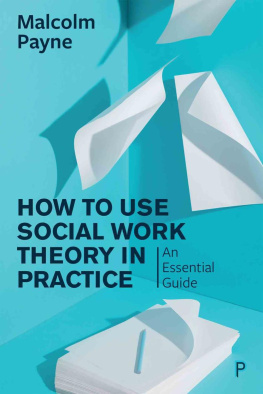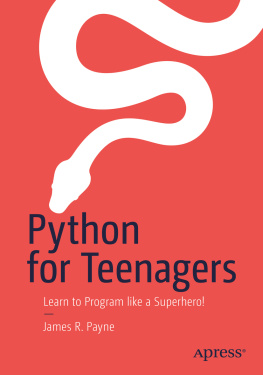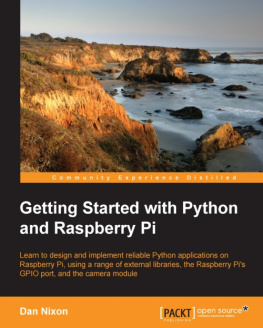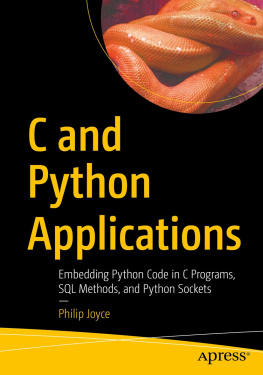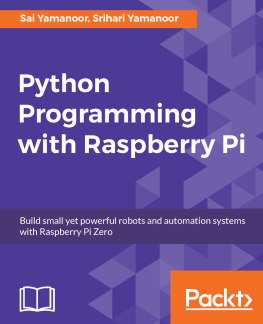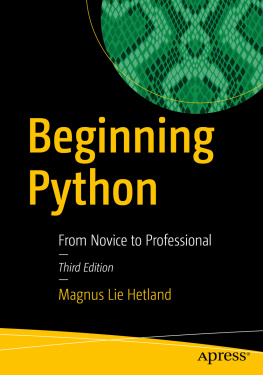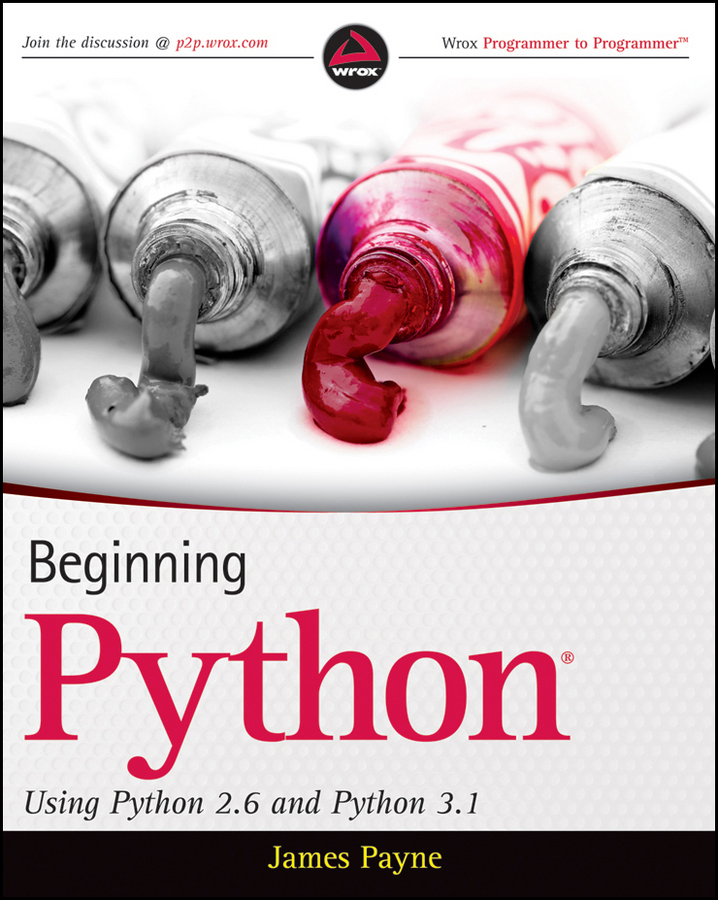Contents
Beginning Python: Using Python 2.6 and Python 3.1
Published by
Wiley Publishing, Inc.
10475 Crosspoint Boulevard
Indianapolis, IN 46256
www.wiley.com
Copyright 2010 by Wiley Publishing, Inc., Indianapolis, Indiana
Published simultaneously in Canada
ISBN: 978-0-470-41463-7
No part of this publication may be reproduced, stored in a retrieval system or transmitted in any form or by any means, electronic, mechanical, photocopying, recording, scanning or otherwise, except as permitted under Sections 107 or 108 of the 1976 United States Copyright Act, without either the prior written permission of the Publisher, or authorization through payment of the appropriate per-copy fee to the Copyright Clearance Center, 222 Rosewood Drive, Danvers, MA 01923, (978) 750-8400, fax (978) 646-8600. Requests to the Publisher for permission should be addressed to the Permissions Department, John Wiley & Sons, Inc., 111 River Street, Hoboken, NJ 07030, (201) 748-6011, fax (201) 748-6008, or online at http://www.wiley.com/go/permissions .
Limit of Liability/Disclaimer of Warranty: The publisher and the author make no representations or warranties with respect to the accuracy or completeness of the contents of this work and specifically disclaim all warranties, including without limitation warranties of fitness for a particular purpose. No warranty may be created or extended by sales or promotional materials. The advice and strategies contained herein may not be suitable for every situation. This work is sold with the understanding that the publisher is not engaged in rendering legal, accounting, or other professional services. If professional assistance is required, the services of a competent professional person should be sought. Neither the publisher nor the author shall be liable for damages arising here from. The fact that an organization or Web site is referred to in this work as a citation and/or a potential source of further information does not mean that the author or the publisher endorses the information the organization or Web site may provide or recommendations it may make. Further, readers should be aware that Internet Web sites listed in this work may have changed or disappeared between when this work was written and when it is read.
For general information on our other products and services please contact our Customer Care Department within the United States at (877) 762-2974, outside the United States at (317) 572-3993 or fax (317) 572-4002.
Wiley also publishes its books in a variety of electronic formats. Some content that appears in print may not be available in electronic books.
Library of Congress Control Number: 2009936814
Trademarks: Wiley, the Wiley logo, Wrox, the Wrox logo, Wrox Programmer to Programmer, and related trade dress are trademarks or registered trademarks of John Wiley & Sons, Inc. and/or its affiliates, in the United States and other countries, and may not be used without written permission. Python is a registered trademark of Python Software Foundation. All other trademarks are the property of their respective owners. Wiley Publishing, Inc. is not associated with any product or vendor mentioned in this book.

To my patient and loving wife, Whitney, who believed in me before I did. And to my parents, Ronnie and Sharon Payne, who raised me to believe I could do anything I put my mind to, even when I told them I wanted to be Santa Claus. For my brother, Ron, who read my work even when it was bad, Dorjan, Eric, Clem, and Nick because they know things about me and will tell them if I dont include them.
About the Author
James Payne (Margate, FL) is Editor-in-Chief of Developer Shed, Inc. and has been writing and programming since the age of seven years old. Proficient in many languages, he has written over 400 articles covering practically every major programming language. As a contractor, he develops proprietary software for the financial industry using Python and likes to dabble in Django in his spare time.
Credits
Executive Editor
Carol Long
Project Editor
Ed Connor
Technical Editor
Chris McAvoy
Production Editors
Amy Weintraub and Tim Tate
Copy Editor
Kim Cofer
Editorial Director
Robyn B. Siesky
Editorial Manager
Mary Beth Wakefield
Marketing Manager
David Mayhew
Production Manager
Tim Tate
Vice President and Executive Group Publisher
Richard Swadley
Vice President and Executive Publisher
Barry Pruett
Associate Publisher
Jim Minatel
Project Coordinator, Cover
Lynsey Stanford
Proofreaders
Scott Klemp and Kristy Eldredge, Word One
Indexer
Ron Strauss
Cover Image
istockphoto.com/Frank_U
Acknowledgments
I would like to acknowledge the gang at Developer Shed: Jack and Jay Kim, whose constant hatred is an inspiration, Charles Fagundes, who made me an editor and not just a writer, Keith Lee, who provided coding support, and a special thanks to Jenny Ruggieri, who got me the job that got me this book. Lastly, Id like to thank all of the people that worked on the previous editions of this book for laying the groundwork, and the Editors Carol Long, Jenny Watson, Ed Connor, and Chris McAvoy who helped me meet deadlines no matter how much I didnt want to.
I would also like to acknowledge Guido Von Rossum, without whom there would be no language to write about.
Introduction
Welcome to Python 3.1!
Ive been working with Python for about ten years now, and every new version has caused me to fall in love with the language all over again. Version 3.1 is no different. If you are new to Python, rest easy Ill guide you every step of the way. If, on the other hand, you are an old Python hand exploring the new version, the book is structured so that you can learn the new information you need, without wasting time on already-known information.
I wanted to write this book because I love Python. I love it! And I want to share my love with you. And, maybe youll grow to love it as I do.
Who This Book Is For
If youre computer-literate, and want to learn a fun programming language to better control your computer, this book is for you.
If you are a system administrator who wants to learn a great language to help you better manage and configure systems and networks, this book is for you.
If you already know Python, but are wondering what cool new features are available in version 3.1, this book is for you.
In summary, this book is for anyone interested in exploring Python programming with the newest and most full-featured, easy-to-use version, 3.1.
What This Book Covers
This book is designed to cover Python 3.1. Python 3.1, released in 2009, is the latest major revision of the Python programming language. Since Python is a cross-platform language, the content and examples in the book are applicable in any platform (unless specified otherwise). When there is a choice to be made as to platform independence, the examples will be as cross-platform as possible.
In addition, since Python 3.1 is relatively new, not all supporting libraries have been updated to work in Python 3.x. In those instances where this is the case and it is felt that the theory still needs to be expounded upon, Python 2.6 will be used in lieu of version 3.1.
How This Book Is Structured
As might be expected from a Beginning book, the book begins with an introduction to the language. From there, youll move through the core of the language, then move on to more advanced and specialized topics. The book is divided up into four parts.


